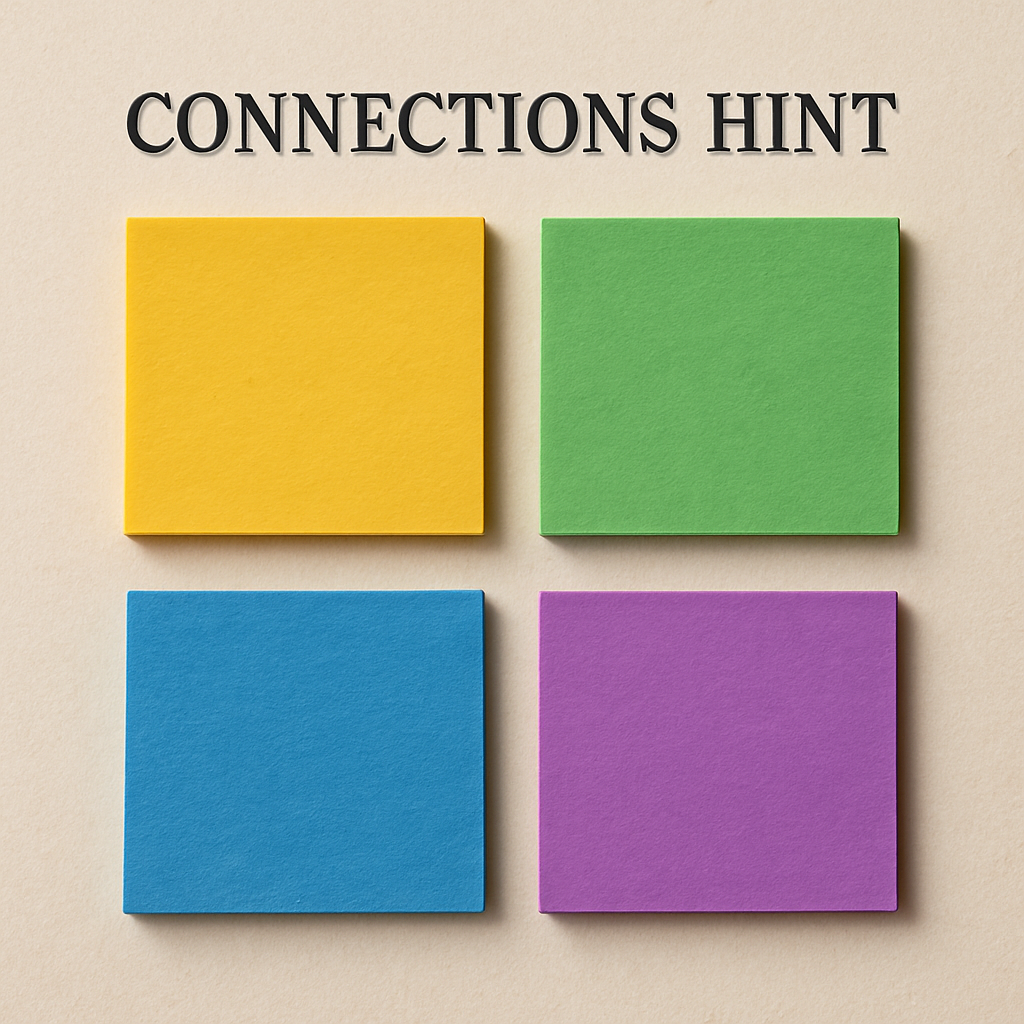Introduction to NYT Connections
What is NYT Connections?
NYT Connections is a popular word‑puzzle game by The New York Times. The objective? Group a list of words into four thematic categories. It’s like organizing puzzle pieces into boxes—satisfying and brain‑stretching.
Why hints matter in gameplay
Hints act like gentle nudges when you’re stuck. They strike the balance between challenge and fun, helping you move forward without spoiling the entire puzzle.
Understanding the hint system
Types of hints available
There are several clue types: revealing one correct grouping, highlighting a word that belongs in a category, or even identifying shared patterns. These can vary based on difficulty settings.
How hints show and trigger
Hints are typically unlocked when you’re down to a few guesses, or via in‑game hint buttons. Some versions refresh daily or provide limited hint tokens—you need to think strategically.
When to use a hint
Early‑game vs late‑game hints
Using a hint early gives momentum and saves time. Late‑game hints help confirm your grouping before mistakes cost points. Think of early hints as a workout warm‑up, late‑game hints as your final set.
Balancing challenge and progress
Too many hints reduce the thrill. Too few, and frustration sets in. Your goal? Use hints to scaffold insight, not replace it.
Smart hint strategies
Eliminating wrong choices first
Cross off unlikely word associations. Removing red herrings makes hints more targeted and useful.
Pattern recognition & categories
Thematic clusters
Search for obvious themes—colors, animals, food, actions. Themes help anchor your thinking and guide hint value.
Word‑play and puns
NYT often includes double meanings or playful twists. Pay attention to homonyms, idioms, or categories with punny edges.
Avoiding over‑reliance on hints
Building intuition and confidence
Try solving a few rounds without hints to build pattern‑spotting muscle memory. You’ll depend on hints less over time.
Practicing without hint mode
Challenge modes or time‑free sessions help you refine pattern logic. It’s like training without training wheels.
Adjusting hints for difficulty levels
Beginner level hints
Beginners may get extra nudges—like identifying one correct word per category. These help build confidence.
Advanced player hint techniques
Advanced players often skip hints until absolutely necessary, or use them to confirm final groupings rather than give away categories.
Common pitfalls using hints
Spoilers vs helpful nudges
A hint should point, not solve. If a hint gives away whole groupings, it feels like a spoiler. Use hints that preserve your sense of discovery.
Misinterpreting vague clues
Sometimes a hint may seem vague. Don’t guess blindly—connect the words logically. Completing one category first sharpens your interpretation.
Hints in group play and challenges
Teammates and collaborative solving
In teams, hints can fuel discussion. One person reads, another eliminates options. Together, you refine categories faster.
Friendly competition and hint timing
Wait to hint until someone struggles visibly—it keeps competition fair. Share hints sparingly to maintain suspense.
Tips to create your own hints
Crafting subtle yet clear cues
When making custom puzzles, hint matching words but keep theme hidden. Example: “Group 1 has three cooking‑related terms” instead of naming the theme outright.
Adapting for different audiences
For kids, hints can be simpler (“this one is an animal”). Adults may enjoy playful or cryptic cues (“think royal colors”). Adjust tone accordingly.
Resources for improving hint‑making skills
Communities and forums
Online spaces like NYT puzzle forums and Reddit often discuss hint strategies and patterns. Reading others’ puzzles helps you internalize common themes.
Daily play & practice tools
Play daily puzzles consistently. Use replays or archived challenges to track your improvement over time.
Real‑world benefits of mastering hints
Sharpening problem‑solving skills
Hints often encourage logical deduction, pattern spotting, and elimination tactics—skills you use outside puzzles too.
Boosting vocabulary and creativity
Frequent play exposes you to new words and ideas. Hints invite lateral thinking and creative connections.
Conclusion
Hints in NYT Connections are more than just cheat codes—they’re strategic tools that enhance your solving experience without spoiling the fun. Use them wisely: early for momentum, late for confirmation, sparingly to build mental muscle. With smart hint use, you’ll sharpen your word‑association skills, boost your vocabulary, and enjoy puzzles even more.
FAQs About NYT Connections Hint
Can using many hints hurt my puzzle ranking?
While NYT doesn’t penalize hint use in ranking, over‑reliance means you learn less—so you’ll solve slower over time.
Are hints consumable or unlimited?
Depends on your subscription or edition. Some versions offer daily limited hint tokens, while others are unrestricted.
What if a hint seems misleading?
Hints should guide, not deceive. If it feels off, revisit your word clustering logic; sometimes you’ve mis‑categorized initial words.
How to get better at solving without hints?
Regular daily play, self‑challenge without hints, analyzing past puzzles’ categories—all build intuitive solving skills.
Can I turn hints off completely?
Some versions let you disable hints in settings or choose harder modes. Alternatively, simply avoid pressing the hint button unless needed.


